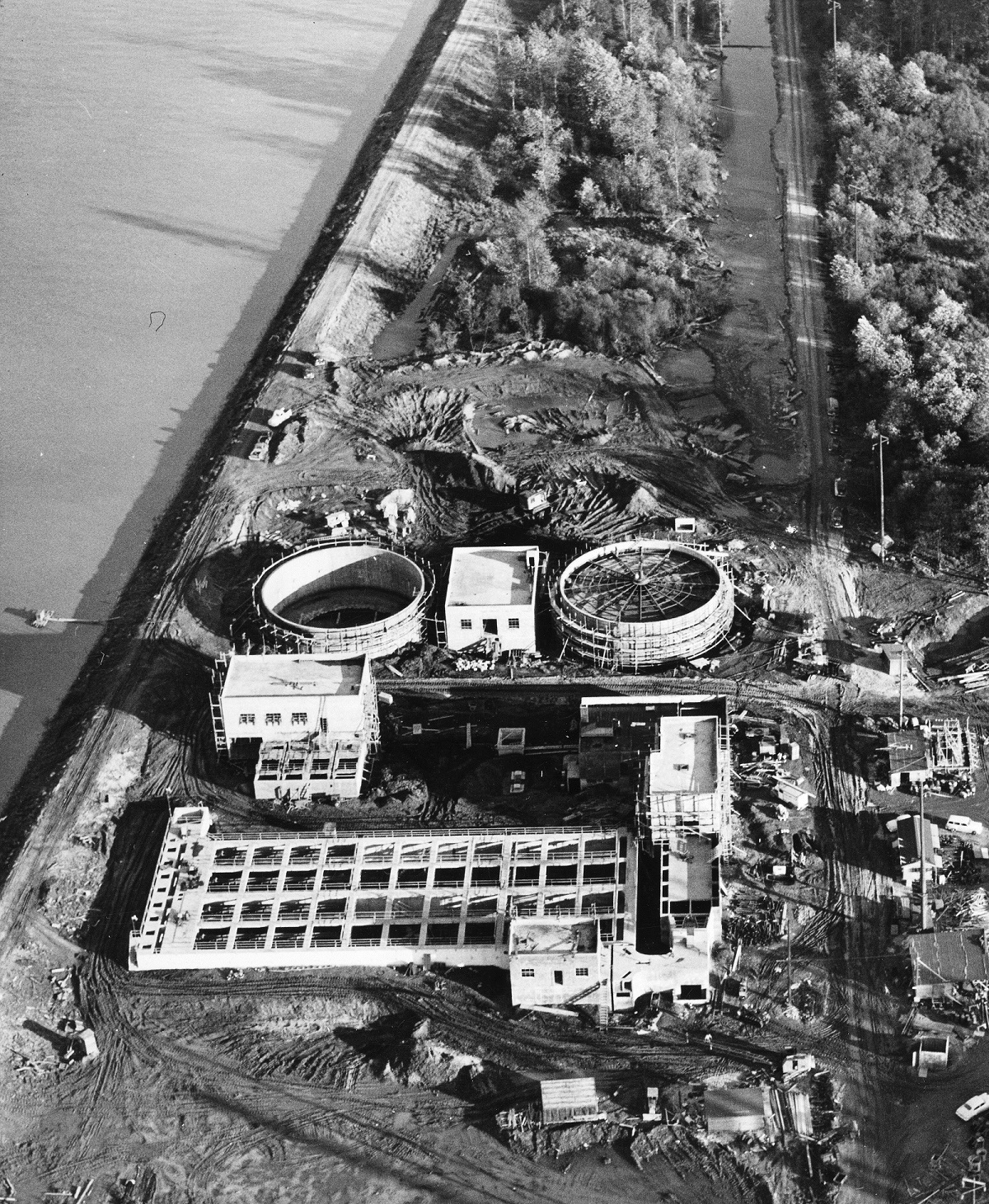Tacoma, originally called Commencement City, was founded in 1868 by townsite promoter General Morton McCarver. He recognized that Tacoma's deep harbor and abundant timber were great assets for future growth. By 1873, he had succeeded in his effort to have Tacoma selected as the terminus of the Northern Pacific Railroad.
Tacoma's Collection (Sewer) System
Community sewers were first constructed in Tacoma in 1880. They were designed to follow the shortest route to the tidewaters of Commencement Bay.
The development of the city, with the associated industrial and population growth, contributed to the pollution of natural resources far more than nature could handle. In the 1940s, the City began to seriously assess and combat the pollution problems caused by sewer discharges.
In 1944, voters passed a $3 million bond issue for the construction of essential sewers and a wastewater treatment plant to serve central, southern and eastern parts of Tacoma. Construction of the main sewers began in 1949.
In 1955, the City hired engineers to prepare a report on a long-range program of sewage and drainage improvements that would help the City solve its wastewater pollution problems. Phase I of the program included separating established surface water and wastewater systems within the city.
A surface water/wastewater separation program, begun in the late 1950s, eliminated major discharges of raw sewage through storm drains. By 1993, the City had disconnected all its storm drains from the sewer system, eliminating most of the surface water that unnecessarily entered the wastewater treatment system.
In 1995, the City began an aggressive Inflow and Infiltration program. At a cost of $4 million a year, it began upgrading or replacing old sewer pipes that allowed groundwater and surface water to seep into the sewer system.
Through the Inflow and Infiltration program, the City continues to remove private roof drains, identified during smoke tests (sending smoke through pipes to identify if drains are connected), from the sewer system.
Treatment Plants
The 1944 bond issue that provided money for sewers in the city also called for the construction of a wastewater treatment plant to serve central, southern and eastern parts of Tacoma. Construction of the first primary treatment plant, now known as the Central Wastewater Treatment Plant, was finished in 1952.
The 1955 engineering report that led to the separation of established surface water and wastewater systems also called for doubling the capacity of the Central Wastewater Treatment Plant and building two new treatment plants.
In 1962, the City built a second treatment plant, known as the Western Slopes Treatment Plant, along the Tacoma Narrows to serve the western section of the city. This treatment plant, as was standard practice at the time, mainly removed solids - known as primary treatment - before discharging the wastewater into Puget Sound. When more stringent water quality controls called for secondary treatment before discharge, the City closed the Western Slopes plant. The City determined it was more cost effective to build a pump station and pay Pierce County to treat wastewater from that area at its Chambers Creek Treatment Plant, which provided secondary treatment.
The North End Wastewater Treatment Plant was built in 1968.
The North End Wastewater Treatment Plant and the Central Wastewater Treatment Plant were renovated and upgraded in the 1980s and 1990s, bringing them both up to award-winning secondary treatment standards.
Today's Wastewater and Surface Water Management
We've come a long way from those early days of sewer overflows and overloads. Now, our Wastewater and Surface Water Management divisions participate in the cleanup and restoration of our waterways and watersheds and have become champions for the protection and preservation of one of the Northwest's greatest assets to quality of life.